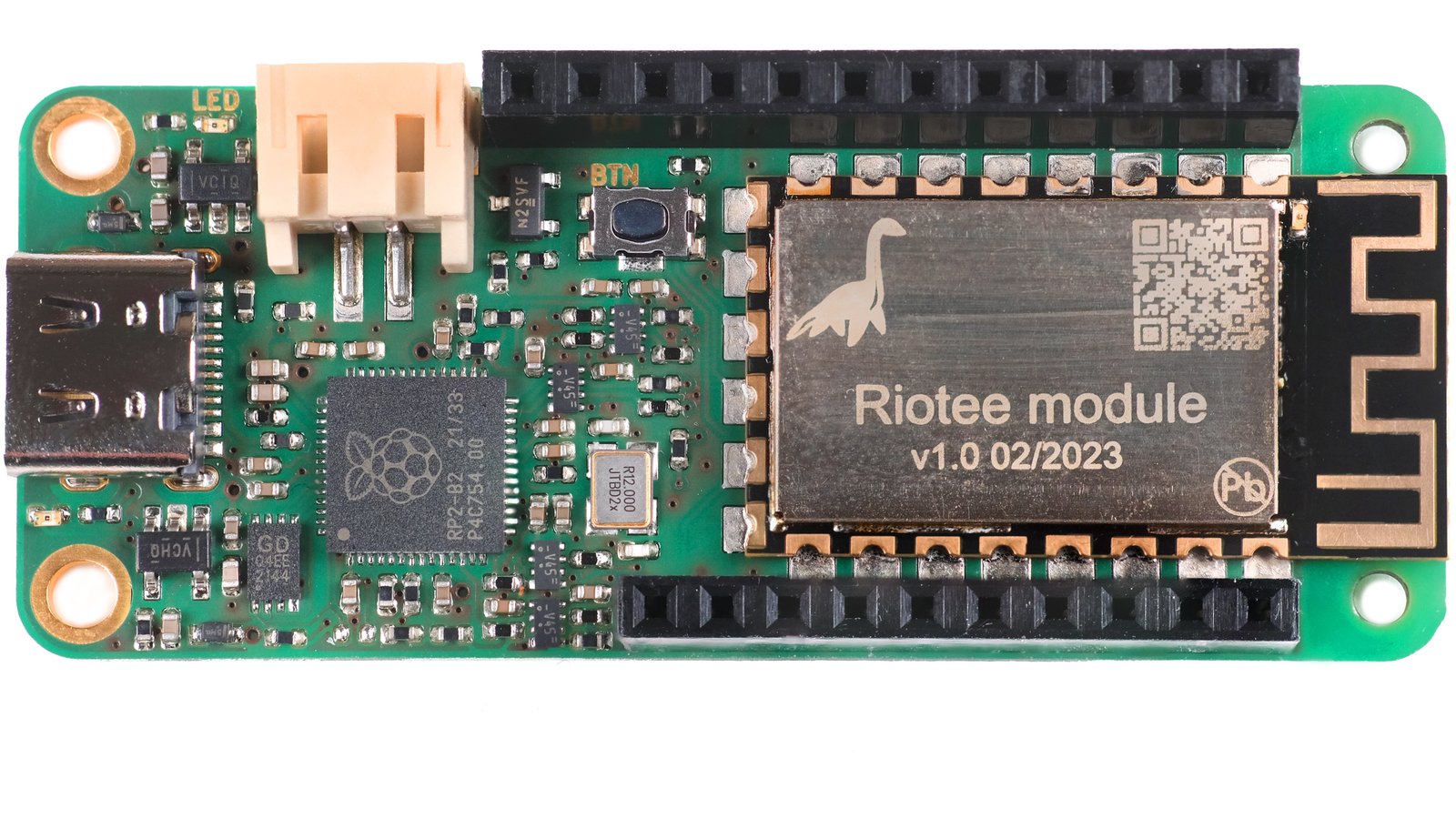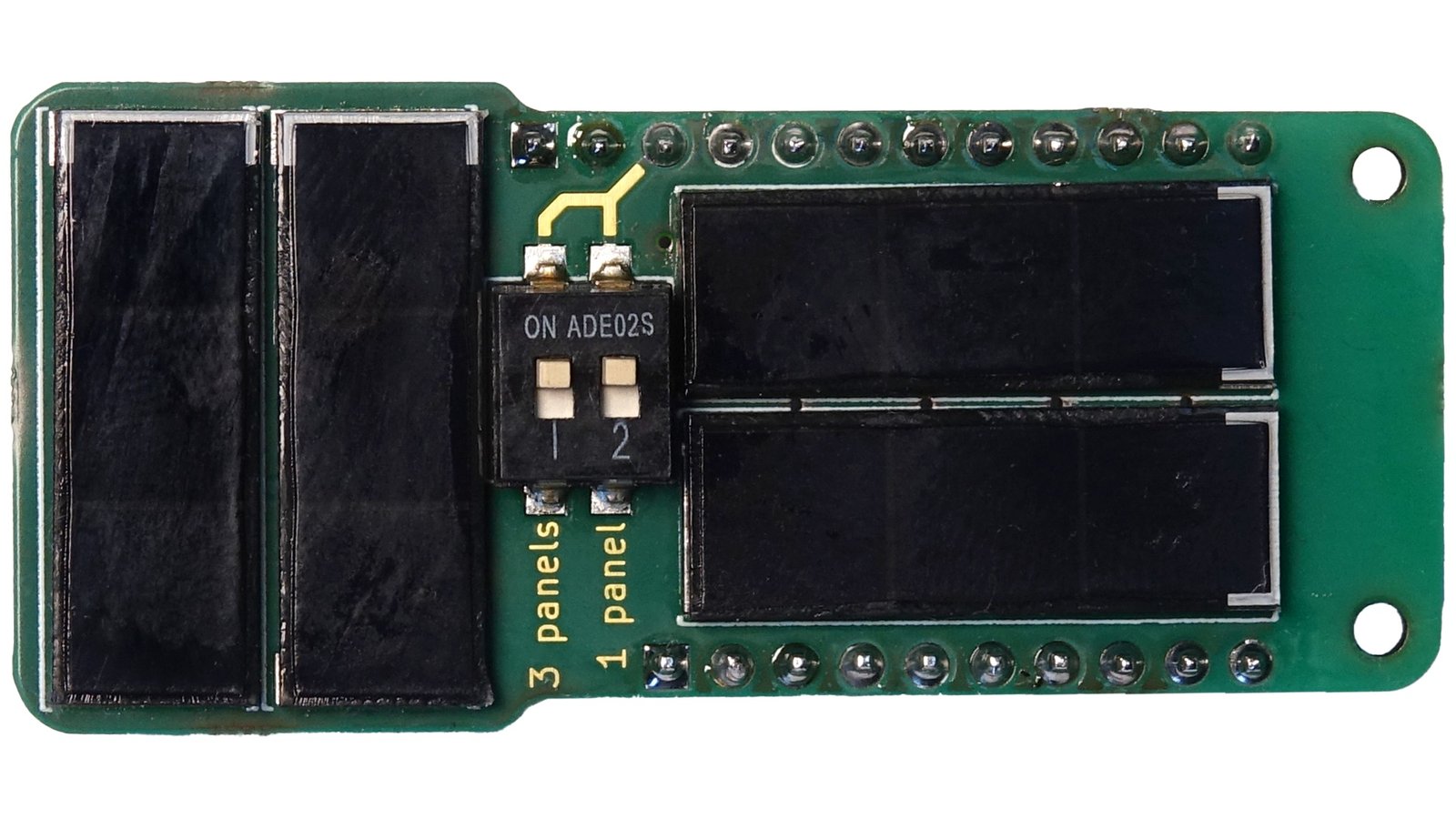Nessie Circuits
Microcontroller Boards
Nordic Semiconductor
Nessie Circuits
Microcontroller Boards
Nordic Semiconductor
Every year millions of new portable IoT devices are sold, and they are all powered by batteries. Regularly replacing millions of batteries is inconvenient, expensive, and bad for the environment. We believe it’s time for a responsible Internet of Things that leaves batteries behind in favor of renewable energy and sustainable energy storage.
Our battery-free devices rely entirely on energy that can be harvested from sources like small solar panels. The harvested energy is often unreliable and insufficient to power such a device directly. To remain operable, it will accumulate energy in tiny, sustainable capacitors. When those capacitors are charged, the device will activate and function until its capacitors are drained, at which point it will turn off until it has gathered enough energy to resume operation. Our custom hardware-and-software solution automatically handles this intermittent execution so that you can write your code just like you would for a powered board.
According to the Environmental Protection Agency, the waste from batteries adds up to over 180,000 tons per year in the US alone. Most of this toxic waste gets burned or ends up in landfill. Rechargeable batteries may reduce the amount of waste by lasting a few hundred charging cycles but they are made from unsustainable materials like Lithium and Cobalt.
Riotee instead relies on sustainable capacitors for energy storage. The materials used in these capacitors are commonly found around the globe, and the capacitors themselves last for decades – much longer than the lifetime of a typical device. You can contribute to a more responsible Internet of Things by using Riotee for your next project.
If your battery-powered device does any significant sensing, computing, or communication, you will either have to deal with large, expensive batteries or replace your smaller, cheaper batteries every couple of days, which is annoying, expensive, and bad for the environment.
With Riotee, you don’t need to worry about replacing batteries. A tiny solar panel measuring 23 x 8 mm can produce around 25 mWh on an overcast day. To get the same amount of energy from a typical CR2032 coin-cell battery, you would have to replace it about once a month.
Our team of researchers has contributed to something of a revolution within the scientific community. More and more of us are leaving batteries behind in favor of newer, smarter designs that leverage concepts like mesh networking and human-activity recognition. With Riotee, you can be part of that movement. Begin your battery-free adventure with the latest hardware, straight from the research lab!
Until recently, you’d have faced extremely high barriers to entry if you wanted to start designing battery-free IoT products. If you weren’t interested in developing your own hardware from scratch, you’d have been faced with premature, poorly documented schematics. We’ve been there, and it took a great deal of time, effort, and money to get where we are now. Riotee is an affordable line of products with an easy-to-use Arduino package to help you get started, but it’s also a robust, well-documented hardware platform that advanced users and product designers will find infinitely hackable.
We offer six products that make it easy for you to implement your battery-free application, whatever that may be.
Our Riotee Module is the heart of the product line. It integrates energy harvesting, energy storage, power management, non-volatile memory, a powerful Cortex-M4 processor, and a 2.4-GHz, BLE-compatible radio into a tiny module with the footprint of a postage stamp. Solder it to a PCB full of sensors, peripherals, and whatever else you need for your application. Add a solar panel, and you have a fully functional, battery-free device!
Our Riotee Board combines a Riotee Module with a USB Type-C connector and circuitry that facilitates programming and debugging. Two 0.1-inch pin sockets expose all signals from the Riotee module, including 11 GPIOs that support I²C, SPI, and analog sensor applications. You can also use these headers to connect multiple Riotee Shields if you want to extend the capabilities of your device without designing a custom PCB. The Riotee Board has a push button, an LED, and a connector for a solar panel. Once your firmware has been flashed to the board, it will automatically switch over to untethered, battery-free operation.
Our Solar Shield plugs into the Riotee Board’s headers. It has four small solar cells and a pair of sliding switches that allow you to select one, three, or all four solar cells so you can experiment to see which configuration works best under specific conditions.
Our Sensor Shield adds an accelerometer, a temperature-and-humidity sensor, and a microphone.
Our Capacitor Shield allows you to add more capacitance to your device. The capacitors on-board the Riotee module are sufficient for many applications, but some require more in order to, for example, send a large wireless packet. The Capacitor Shield includes an eight-position switch that allows you to connect additional capacitors ranging from tiny ceramics to large supercapacitors.
Our Riotee Probe allows you to program a Riotee Module after you’ve soldered it onto your PCB or plugged it into a breadboard. It has a standard, 10-pin, 0.1-inch connector and is compatible with Tag-Connect cables that support in-circuit debugging.
Combine a Riotee Board with a Sensor Shield and a Solar Shield, and you’ve got yourself a weather station that can send environmental sensor data to the cloud for decades without ever needing a battery replacement. Or, how about wedging our tiny Riotee Module into a battery-free fitness tracker that measures oxygen saturation and counts steps while drawing power from body heat or solar energy? Want to teach students the basics of sustainable electronics and renewable energy? Our Arduino-based software will help you do so using hands-on examples. And of course, if you’re a researcher working on advanced topics like machine learning, mesh networking, or intermittent computing, Riotee can help you explore the latest scientific advancements in the field.
Riotee is fundamentally different from existing battery-free platforms. It is an open-source platform that you can program using standard tools—like Makefiles and pyOCD/OpenOCD—or from within the Arduino IDE. It combines a powerful, 64-MHz CPU with a floating point unit and non-volatile RAM that allows it to checkpoint application state. Together, these features provide battery-free support for long-running computations like machine-learning inference. Riotee also offers various peripheral interfaces so you can easily connect sensors, storage, and additional radios. Our open-source protocol implementations allow you to connect your devices to the cloud, or you can access the radios directly to develop your own protocols.
| Riotee | Enocean STM 400J | Wiliot Pixel ¹ | Everactive Eversensor ¹ | |
|---|---|---|---|---|
| Radio | Open 2.4 GHz (BLE, Zigbee, etc.) | Proprietary Sub-GHz | 2.4 GHz BLE | Proprietary Sub-GHz |
| Harvesting technology | Solar, thermal, kinetic, and more ² | Solar, thermal, kinetic, and more ² | RF | RF, solar, thermal, kinetic, and more ² |
| CPU | 64 MHz 32-bit Cortex-M4 w/FPU | 16 MHz 8-bit 8051 Core | 1 MHz 32-bit Cortex-M0+ | 32-bit Cortex-M0 |
| Memory | 512 kB flash, 128 kB RAM | 64 kB flash, 4 kB RAM | 64 kB flash, 2 kB RAM | Unknown |
| Open Source | All software, and hardware design files for all accessories | No | No | No |
| Programmable | Yes | Yes | No | No |
| Intermittent Computing | Yes | No | No | No |
| Non-volatile RAM | 128 kB | No | No | No |
| Peripherals | ADC, SPI, I²C, UART, PWM, and I²S | ADC, DAC | None | ADC |
| Communication Range | Over 100 m (estimated) | 300 m | 10 m | 250 m |
| Maximum Power Point Tracking | Yes | No | No | Yes |
| Programming tools | Standard, cross-platform (GCC, pyOCD, Arduino, etc.) | Custom, Windows-only IDE | Cloud-based only | Cloud-based only |
| Usage Fees | No | No | Yes | Yes |
¹ "Starter kit" only. Individual modules and development boards are not available for purchase by end users
² Solar harvesting is often the easiest, most available energy source, but as long as you match the voltage and power requirements of the Riotee module you can also power the device from other energy sources like kinetic or thermal harvesting
All of our software is open source. You can find it in our GitHub repositories:
A pinout diagram, block diagram, footprint, and 3D model of the Riotee module are available here. For all other products, the complete hardware design files are available under the CERN OSHW license:
You can also find a battery-free primer, a quickstart guide and other useful information on our documentation page.
Produced by Nessie Circuits in Berlin, Germany.
Sold and shipped by Crowd Supply.

Battery-free BLE module.

Development board for Riotee Module. Comes with two unsoldered pin headers.

Add-on shield with four small solar panels for Riotee Board. Comes with two unsoldered pin headers

Add-on shield with a microphone, an accelerometer, and a temperature-and-humidity sensor for Riotee Board. Comes with two unsoldered pin headers.

Add-on shield with a selection of additional capacitors for Riotee Board. Comes with two unsoldered pin headers.

USB programming dongle for Riotee Module

From the nRF52840 Multiprotocol SoC & Kits project.
Useful for building a basestation or gateway.
Development board for Nordic nRF52840 in a USB dongle form factor.

· NessieCircuits · NessieCircuits
Nessie Circuits—founded in 2021 in Berlin, Germany—offers embedded hardware and software solutions to customers from academia and industry. Our special focus is on low-power, energy-harvesting devices.